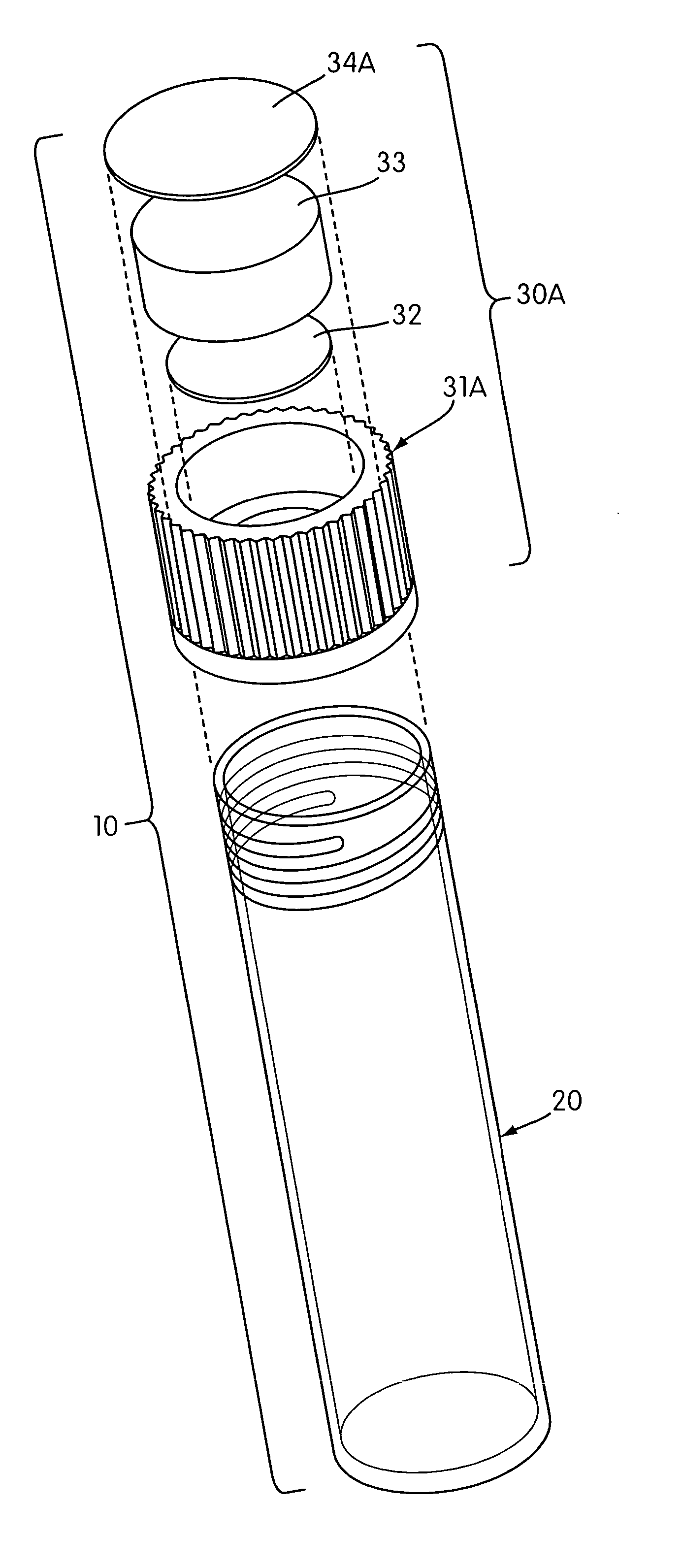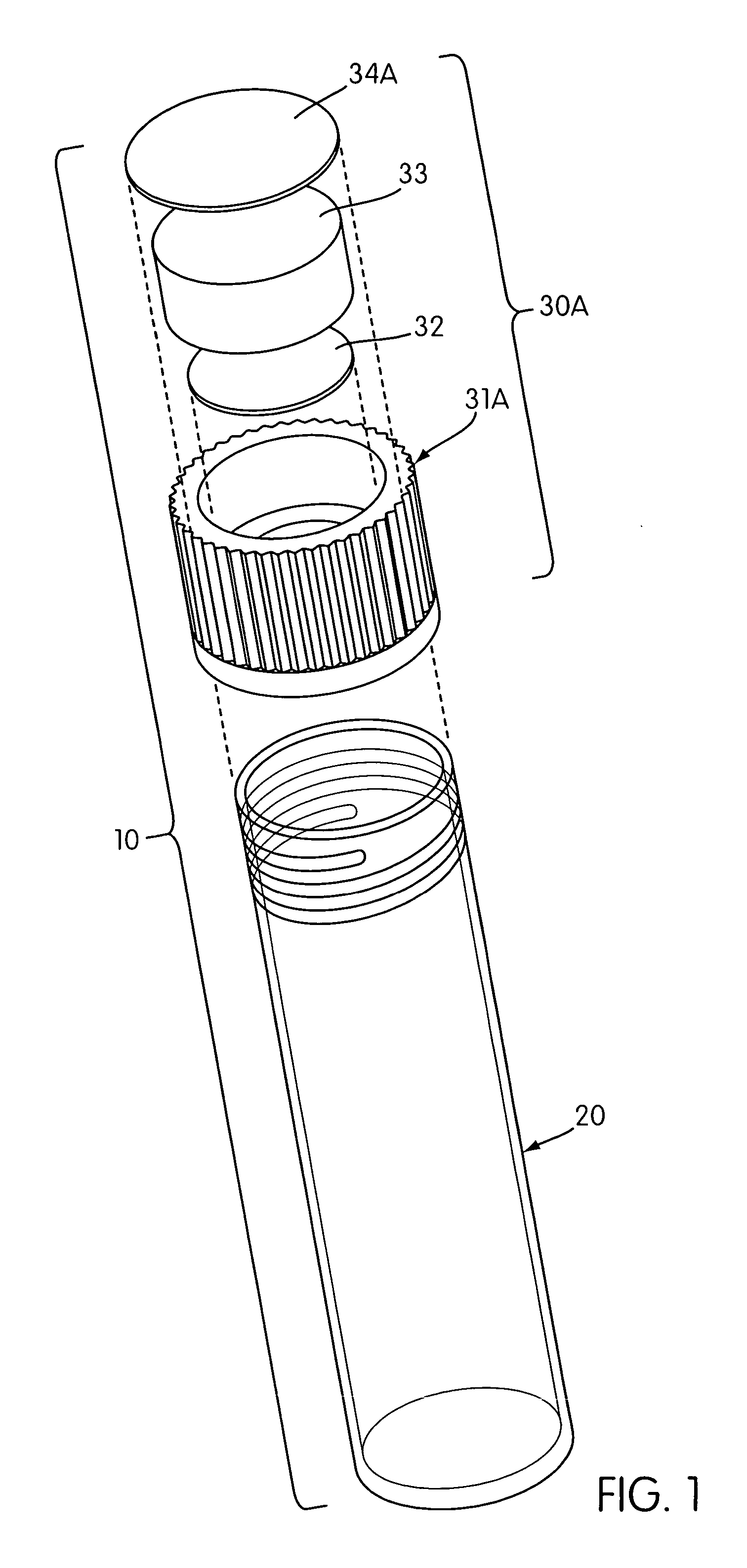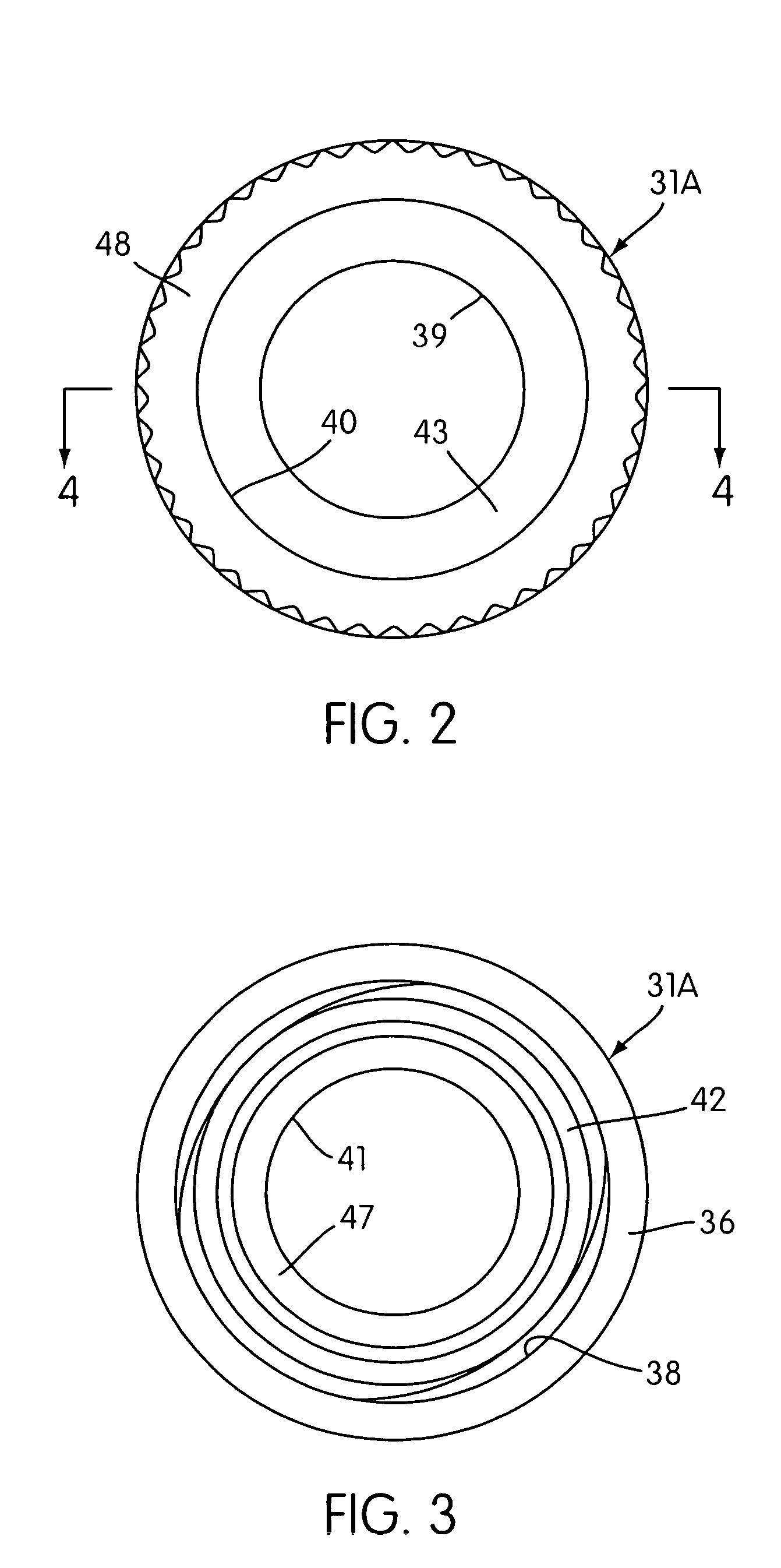Method for transferring a substance to or from a closed system
a closed system and substance technology, applied in the field of caps, can solve the problems of increasing the likelihood that the collection device will be inverted or severely jostled during transport, being exposed to harmful pathogens, and being exposed to significant temperature and pressure fluctuations
- Summary
- Abstract
- Description
- Claims
- Application Information
AI Technical Summary
Benefits of technology
Problems solved by technology
Method used
Image
Examples
Embodiment Construction
[0041] While the present invention may be embodied in a variety of forms, the following description and accompanying drawings are merely intended to disclose some of these forms as specific examples of the present invention. Accordingly, the present invention is not intended to be limited to the forms or embodiments so described and illustrated. Instead, the full scope of the present invention is set forth in the appended claims.
[0042] With reference to the figures, preferred caps 30A-E of the present invention are shown alone or in combination with a vessel 20 which can be used for receiving and storing fluid specimens for subsequent analysis, including analysis with nucleic acid-based assays or immunoassays diagnostic for a particular pathogenic organism. When the desired specimen is a biological fluid, the specimen can be, for example, blood, urine, saliva, sputum, mucous or other bodily secretion, pus, amniotic fluid, cerebrospinal fluid or seminal fluid. However, the present i...
PUM
| Property | Measurement | Unit |
|---|---|---|
| withdrawal force | aaaaa | aaaaa |
| width | aaaaa | aaaaa |
| width | aaaaa | aaaaa |
Abstract
Description
Claims
Application Information
 Login to View More
Login to View More - R&D
- Intellectual Property
- Life Sciences
- Materials
- Tech Scout
- Unparalleled Data Quality
- Higher Quality Content
- 60% Fewer Hallucinations
Browse by: Latest US Patents, China's latest patents, Technical Efficacy Thesaurus, Application Domain, Technology Topic, Popular Technical Reports.
© 2025 PatSnap. All rights reserved.Legal|Privacy policy|Modern Slavery Act Transparency Statement|Sitemap|About US| Contact US: help@patsnap.com



